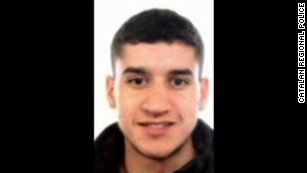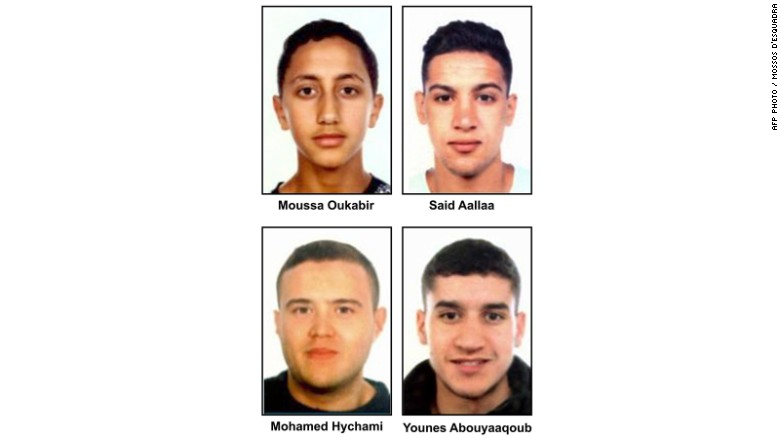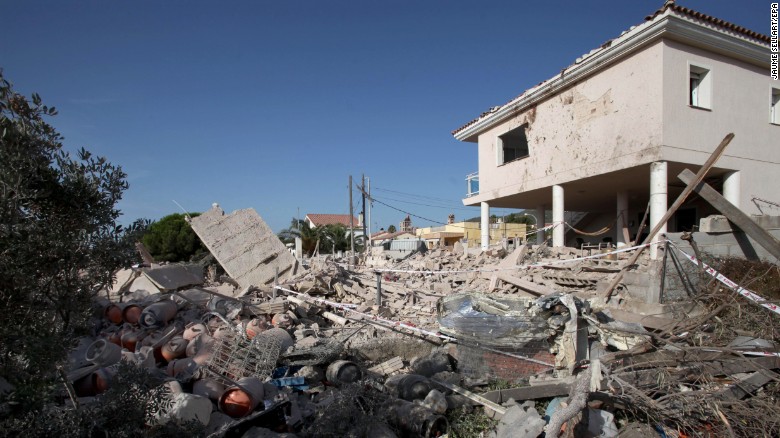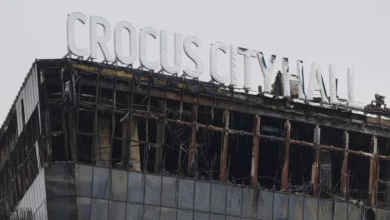
The man suspected of killing 13 people and injuring 120 others when he plowed his van into crowds of people in Barcelona on Thursday has been identified by Catalan authorities as Younes Abouyaaqoub.
Abouyaaqoub, who remains at large, was the only driver of the van, according to Catalan Interior Minister Joaquim Form.
Police have been hunting for Abouyaaqoub, a 22-year-old Moroccan national, since the attack but had not confirmed him as the driver of the van that hit crowds of people on Las Ramblas in Barcelona in the early evening on Thursday.
Speaking to local radio Monday, Form said all the evidence pointed to Abouyaaqoub being the driver and that security services were working with other agencies around Europe to find him.
Police carried out more raids overnight at homes in the town of Ripoll, where many of the suspects in the attack lived, Forn said, according to Reuters.
On Sunday, Catalonia Police Chief Josep Luis Trapero told reporters that he could not confirm whether Abouyaaqoub had already crossed the French border.
“If we knew that he was in Spain and where, we would go after him,” Trapero said Sunday. “We don’t know where he is.”
Abouyaaqoub is one of 12 terror suspects linked to the Barcelona attack who did not have previous records or intelligence files related to terrorism, according to Trapero.
On Saturday, Spanish Interior Minister Juan Ignacio Zoida said that the terror cell believed to be responsible for the attack on Las Ramblas and Cambrils, which left one dead and six injured, had been “completely dismantled.”
Three of the five suspects killed by police in Cambrils were identified by a Catalan police spokesman as Moussa Oukabir, Said Aallaa and Mohamed Hychami.
Eight of the 12 lived in Ripoll, a city north of Barcelona. Three were arrested, and one was Oukabir — one of the dead suspects. Another arrest was made in the village of Alcanar.
Oukabir’s brother, Driss, was among those arrested. He turned himself into police when his identification was found in the Barcelona van, telling authorities he wasn’t involved in the attack.
A man who claimed to be a cousin of the brothers said Moussa Oukabir was “brainwashed.”
A woman who lives next to a mosque in the neighborhood told CNN that she had witnessed the Oukabir brothers attending the place of worship “every day for many years.”
The ruins of the house in Alcanar, a quiet beach town about 125 miles (201 kilometers) south of Barcelona, may hold the key to unraveling the plans and methods of the terror cell.
Police said Sunday that the group inside the house had been planning for “one or more” attacks on Barcelona. The remains of two people have been found on the site so far, police said.
Authorities suspect the property was being used as a base to make explosives that could have caused even more devastating attacks in Barcelona, Cambrils and possibly elsewhere had they not blown up prematurely.
Explosives experts brought in a bulldozer Saturday to clear rubble before conducting a number of controlled explosions at the site in Alcanar’s Montecarlo area.
So far, police have found more than 100 of gas canisters on site.
The city’s vice mayor, Jordi Bort, told CNN the house belonged to a bank and that the group had been squatting there illegally without its knowledge.
The town is home to a mix of yearlong residents and others who just spend holidays or weekends here, he said. Neighbors said they did not suspect any wrongdoing at the property.
The septic tank of the house, which had only one floor, was used as storage for the tanks and explosives, Bort said.
Wednesday’s explosion meant the attackers were unable to use material they were planning to deploy in the attacks, Trapero said Friday.
The attack in Barcelona, capital of the Spanish region of Catalonia, was therefore “more rudimentary than they originally planned,” Trapero said.
Trapero said the suspects in Alcanar had been trying to “make explosives out of butane gas among other things.”
A source briefed on the investigation said a preliminary assessment indicated there were traces of the powerful explosive TATP in the rubble.
TATP is made by adding an acid to a mixture of acetone and hydrogen peroxide solution and can easily result in accidental detonation if mistakes occur in the preparation.
TATP was used in the November 2015 Paris attacks, the March 2016 Brussels bombings and the May bombing in Manchester, England.
Many of those who have successfully made TATP received some form of terrorist training.
Inspector Albert Oliva, a spokesman for Catalan police, told CNN that investigators are still trying to determine what materials were in the home.
“We need to analyze carefully what caused the explosion, the elements that were inside the house,” Oliva said.
ISIS issued a formal claim of responsibility for the two attacks in Spain. However, the extremist group did not provide any proof it carried out the attacks or provide the names of the attackers or the number of them.
There are also inconsistencies between ISIS’ statement and the police version of events.












